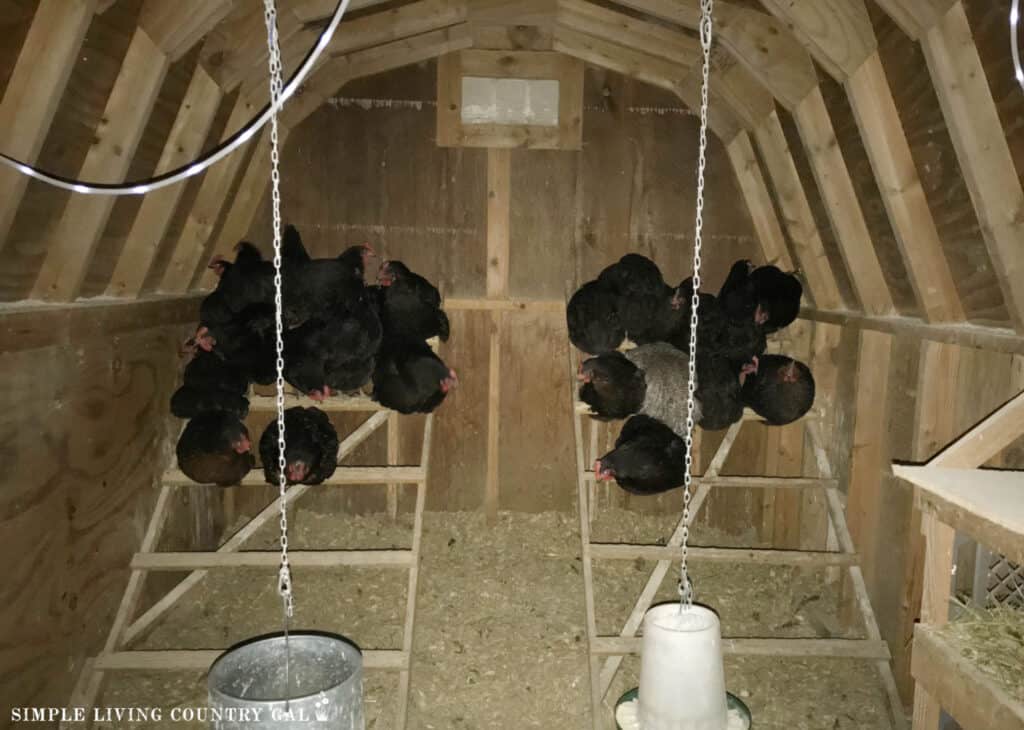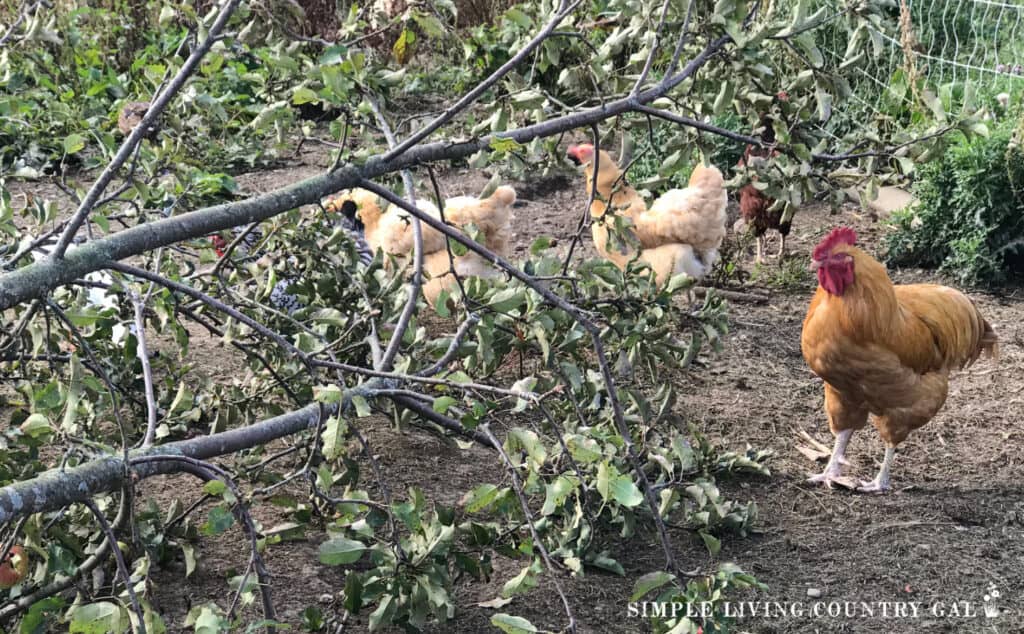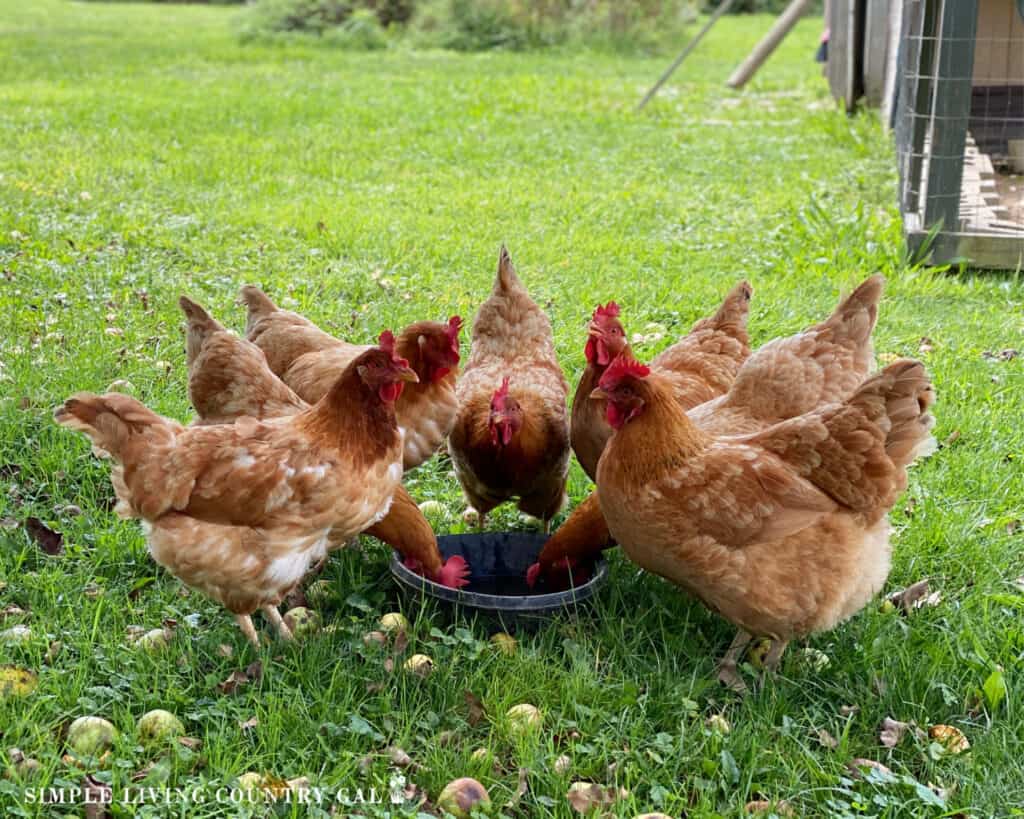Introducing New Chickens to Your Flock
This guide on introducing new chickens to your flock will help you to grow your coop slowly and consistantly. Adding in new chicks every other year is a great way to keep the eggs flowing without a break.
How to raise chickens by establishing a coop that is healthy and thriving.

Raising chickens in your backyard is a rewarding and fun way to start your journey as a homesteader.
Not only do you get the benefits of fresh eggs, but you’ll also get the added benefit of healthier soil that you can grow vegetables in. Growing a flock means adding new members every 2-3 years to keep a consistent egg flow.
This is one of the tricky parts of chickens, mainly because your hens may get aggressive towards the new additions if you are not careful in introducing them to each other.
Luckily there are a few things you can do to make the transition a smoother one for everyone in the coop.
Timing Is Everything: When to Add to the Flock
Before considering the logistics, you’ll want to decide how old your chicks should be before adding them to an established flock.
It’s generally recommended that chickens should be at least 12 weeks old before going out to the coop and this is for two reasons.
- At 12 weeks they will have reached a size where they can defend themselves if necessary.
- At 12 weeks they can more easily withstand the temperatures in your area.
Dawn or dusk
The timing of when you add your new chickens can play a huge role in how things play out. Dusk is a great option because your flock is tired and more relaxed after a long day.
Dawn is another good choice because often that is when the flock is fed and food can be a good distraction when bringing in new members.
For us, we like to do things after dark when everyone is up resting on the roost.
Chickens do not have the best memories and if you place a few extra hens on the roost at night, they will most likely wake up believing they were there all along.

Step-by-Step approach to introducing
Doing things slowly is a great way to make the introductions less stressful for you and the birds. Let’s break things down into steps to see the entire process mapped out.
Can I add new chickens to my flock the day I bring them home?
New chickens should be quarantined for a set amount of time before adding to an existing flock.
Keeping them separated will allow you enough time to see they are healthy and carry no diseases that can infect your entire flock.
To do this, you will want to keep them separate for about 30 days. This is usually enough time for any issues to become evident in the hens or roosters you plan to add.
1. Pre-Introduction Preparations
Keep new members separate before adding them in.
• If you purchase grown hens, be sure to quarantine them for at least 30 days to ensure they are healthy. During that time, observe them closely for signs of disease or infection. This time will also allow them to acclimate to you and the food you feed the flock.
• If you purchase chicks, you will need to keep them separated until they are an age that can withstand the rest of the coop and the temperatures in your area. This is usually around 12 weeks of age.
Prepare the Coop for the increased size of your flock.
• Before the introduction day, clean and prepare the coop with fresh bedding and multiple feeding and watering stations to reduce competition.
Give obstacles for new additions.
• Sometimes, chickens can get a little aggressive toward new birds. To help you can add in a few distractions to the coop and run. This will allow everyone a chance to get away from a hen that they feel is threatening to them.

2. Adding new birds
Before putting everyone together
• You can add in a few distractions such as treats, fresh veggie scraps, and meal worms. This will help to keep everyone less focused on the new arrivals.
Keeping Calm
• Animals can sense stress in us, even chickens. If things start to get tense it is important you keep your cool. This will help keep the temperament of the flock calmer.
3. Monitor
Monitor Interactions
• Watch the interactions closely in the beginning for signs of aggression or bullying. Just because things start out fine doesn’t mean it’s smooth sailing going forward. Keep an eye on the entire flock to ensure no injuries.
Separate if needed
• If you see hen pecking happening, separate either the aggressor or the victim from the flock. This will help everyone calm down and heal before you try things again.
SLCG Pro Tip: Chickens have a natural behavior to blood. If they see it on a fellow hen, they will usually peck at the red color.
This can cause a small cut to become more severe quickly. For this reason, you will want to treat any injuries quickly to deter pecking from taking place.
Blu-Kote is a spray we like to have on hand that is purple in color and will treat the wound.
Watch for clues
• Ensure all birds are eating and drinking at chore time. Many times, when you see a chicken not eating, this is a big clue that there is something going on.

4. Chicken Stress
Clues to watch for
Chickens can be stressed by sudden environmental changes, social upheavals, or health issues. There are clues to watch for so you can catch things before they get out of hand.
If you have a chicken that is showing signs of stress you may want to remove them for a few days to allow them time to regain their strength.
- Loose feathers in the coop or run.
- Birds with missing feathers.
- Hens staying away from the flock.
- Pause in egg-laying.
How can you quarantine a stressed chicken?
We like to use a small dog crate for any hen or rooster that needs our care. Add a layer of bedding, water, and feed so they can rest without risk of injury from other flock members.
Usually, just a day or two is all you need to help strengthen your hen or rooster, allowing them to go back to the flock without issue.
Petmate Aspen Pet Traditional Kennel, 28

Clues to watch for in a flock
The more you know your chickens when they are healthy and happy, the more obvious it will be when things are just not right.
Clue #1. Sounds
Be aware of the sounds your chickens make when they are relaxed and calm. Yes, there is a difference between a natural “cluck, cluck” and a alarming “screech” call.
Clue #2. Body Language
Another sign your birds will give is body language. A hunched bird or a drooping bird is a sign there is something going on.
Clue #3. Eating
If you ever seen chickens staying back while the rest of the flock is eating, this is a clue there is something going on with that bird.
Know your chickens so you can catch things quickly before they get out of hand.
The Pecking in a flock
The pecking order in a flock plays a crucial role and one that is good to understand as an owner. You will usually see the order clearly on the roost at night.
If you have a multi-level roost, the more dominant birds will usually be at the top, with the lower-ranking hens lower down.
Hierarchy
• When adding in new hens, there will be squabbles as the order is reestablished. These are normal and part of the integration process, meaning you will want to leave them along to work themselves out. Only intervene if things start to get out of hand.
Rules of Order
• As the integrations happen, always provide more than one source of food and water to avoid conflict over resources.
Be Patient
• It can take time for things to play out and settle, and that might be the hardest part as an owner. Allow things to progress for the time that is needed and only step in if necessary.
Adding at night
As I mentioned, we prefer adding our chickens to the flock after dark. This can help to reduce the chance of daytime aggression and give them a non-threatening environment to wake up to.
How it works:
- After dark, carry in your new chickens one at a time and place them on the roost.
- Do not worry if your other chickens move or cluck, this is natural.
- Continue adding hens onto the roost until everyone is in the coop.
- In the morning, spend some time with the flock to monitor the interactions.
- Only step in if necessary.
Adding at night will not eliminate battles, but it will cut down on them, making things less stressful for the flock and you.
Chicken Care Calendar

Integrating new chickens into an existing flock is more than just logistics; it’s also a chance to see nature in action.
With these tips on introducing new chickens to your flock, you can grow a coop that is peaceful and healthy, giving you a backyard chicken setup that will grow with you and your family.






